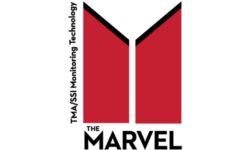School District Graduates to Digital

In the wake of the Columbine High School massacre in Littleton, Colo., school districts across the country became acutely attentive to student safety. The 1999 killings still resonate through the largest metropolis to the smallest town, as school administrators today remain vigilant to prevent a similar tragedy.
One such school system is in Sarasota County, located on the central coast of Florida. Long romanticized for its sunshine and proximity to the tranquil waters of the Gulf of Mexico, the area attracted some of Florida’s first retirees. In the 1950s and ’60s, the county began to attract families, who came to the coast for a quiet, affordable beach getaway. Many stayed and took root, and through the years so have many others.
Today, Sarasota County’s school system is the largest employer in the county. The district educates about 43,000 students in 50 elementary, middle and high schools, plus facilities for gifted students. While crime at its campuses was mostly limited to vandalism, the district was moved to take much greater preventive action after the senseless murders of 12 students and one teacher.
“After Columbine,” says Sean O’Keefe, a security support technician in the telecommunications department at the Sarasota County School District, “we wanted to make our schools more proactive with student safety.”
In 2004, the district called upon an outside vendor to perform a security assessment to update their comprehensive crisis management plans. The vendor assessed every school from the way they locked their doors at night to their fire/life-safety plan. A significant development to come out of the security review was a recommendation to commence an aggressive video surveillance capability.
“The main driving issue is student safety,” O’Keefe says. “If the school is vandalized, what do you do with your students the next day? If the cafeteria is vandalized, how do you feed the students?”
At the time of the assessment, some schools in the district were using time-lapse VCR technology performed with a few cameras. However, the district did not store any footage. Each tape ran its course to the end and then simply rerecorded over the old data. O’Keefe contacted Patrick Kelly, a Central and North Florida territory manager for Southeast Security Products of Pompano Beach, Fla. Kelly provided O’Keefe consultative advice about DVRs. The meeting would eventually lead to the purchase of — and training on — Dedicated Micros products.
Security Support Techs Bring to Bare Prior Security Experience
Training end users on installing and making use of CCTV equipment might be a difficult challenge in many cases. But O’Keefe and his district colleague Tim Butler, who also is a security support technician, have been in the security industry for a long time. O’Keefe worked for many years in his father’s family business for home automation, structured cabling, access control and alarms, and home entertainment. Butler started his career as an electrician and moved into fire alarm systems before crossing over into the security arena, specializing in cameras and access control.
“We thus brought the knowledge to be able to design these systems,” explains O’Keefe.
The installation was designed in two phases. In phase one, O’Keefe and Butler met with the principal of each school and asked them for input on where they felt cameras were most needed. As planned, the hybrid CCTV system would utilize analog cameras, while DVRs would be assigned Internet protocol (IP) addresses and run on the district’s existing wide area network (WAN).
The Dedicated Micros Digital Sprite 2 16-channel DVR was chosen for its high capacity video storage and expandability. While early phases of the installation utilized Digital Sprite 2 units, as the DVRs became available with NetVu ObserVer software, the school board changed gears and began installing the technologically enhanced units.
The video management software allows district personnel to simultaneously view feeds via a Web browser from multiple DVRs and cameras. Currently, more than half of the district’s 54 DVRs operate with the NetVu ObserVer program. Each of the school locations also uses several SPECO Technologies VM-15LCS monitors.
One of the considerations in planning the installation was to ensure reliable operation in a high lightning environment.
“We’re 65 miles from Tampa, which is the lightning capital of the world,” says O’Keefe. “There are only three staff members in our department … it’s hard to maintain a district that has hundreds of cameras if you have lightning issues. Not to mention the cost of the equipment if it blows up.”
Lightning, however, doesn’t strike glass. Since many of the schools already had a fiber-optic infrastructure, Mother Nature’s electric outbursts in the region do not pose a danger to the district’s surveillance capabilities. The fiber-optic network also offers a fiscal benefit: the district enjoys a significant savings by using the existing backbone in lieu of pulling coax or twisted pair.
“We worked with the principals to meet all their requirements while keeping the project within a decent budgetary amount,” O’Keefe says. “From there, we designed the system, assessing which building had existing fiber-optic cable, where we could collapse the fiber, and if we had room for our rack in the MDF [main distribution frame].”
If you enjoyed this article and want to receive more valuable industry content like this, click here to sign up for our FREE digital newsletters!

Security Is Our Business, Too
For professionals who recommend, buy and install all types of electronic security equipment, a free subscription to Commercial Integrator + Security Sales & Integration is like having a consultant on call. You’ll find an ideal balance of technology and business coverage, with installation tips and techniques for products and updates on how to add to your bottom line.
A FREE subscription to the top resource for security and integration industry will prove to be invaluable.













